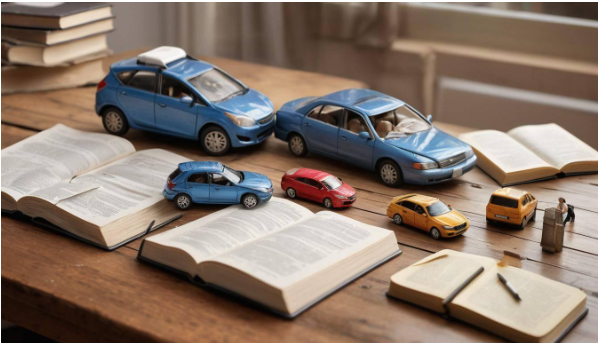Common challenges in car accident cases include proving liability, navigating complex insurance claims processes, and dealing with the statute of limitations for filing a claim. Additionally, gathering sufficient evidence to support your case and negotiating fair compensation can also pose significant hurdles for victims seeking justice after an accident.
Dealing with the aftermath of a car accident can be overwhelming, from managing medical bills to handling insurance claims. Navigating these challenges often requires the expertise of a legal professional to ensure you receive fair compensation. A personal injury attorney can guide you through the complex process, helping you build a strong case and advocate for your rights. For individuals in West Palm Beach, seeking skilled legal support can make all the difference in securing the justice you deserve.
Understanding the ins and outs of the legal framework surrounding car accident claims is essential to effectively pursuing compensation. One of the critical first steps in this journey is recognizing that competent legal representation significantly eases the burden of navigating these complex regulations. Attorneys specifically trained in personal injury law, like those at Idaho Advocates, hold invaluable expertise in deciphering state-specific laws and procedures. They serve not only as guides but also as advocates who ensure that every necessary document is filed correctly and on time.
When you hire an experienced attorney, you’re investing in someone who comprehensively understands the timelines involved, from when to file your claim to deadlines for gathering evidence. This expertise provides peace of mind, allowing victims to focus on recovery instead of legal intricacies. An attorney’s familiarity with negotiation tactics can help maximize compensation during discussions with insurance companies, where many individuals tend to feel overwhelmed.
But it’s not just about hiring someone; understanding your local court systems also plays a vital role in the process. Each state has its own set of rules regarding car accident claims, and Idaho serves as an excellent example here. For instance, Idaho has a statute of limitations that allows a three-year window for filing claims following an accident. Missing this deadline could mean losing your right to seek any form of compensation for injuries sustained.
Additionally, knowing which court has jurisdiction over your case can make a significant difference in how quickly proceedings unfold. Each jurisdiction could have unique practices that affect everything from filing fees to timelines for hearings. Apprehensions about jurisdiction can lead to delays that result in frustration, further complicating an already stressful situation.
Ultimately, navigating the legal landscape requires both professional support and a foundational understanding of the processes involved. By combining guidance from skilled attorneys with knowledge of localized regulations, victims can transform what initially seems like an overwhelming struggle into a manageable pathway toward securing fair compensation.
With this solid grounding in navigating the legal complexities behind claims, it’s important to turn our attention to another critical aspect—the challenges of collecting evidence effectively.
Evidence Collection Challenges
Collecting evidence after a car accident can feel overwhelming, especially when emotions are running high. One of the primary challenges many face is timeliness. The moments directly following an accident are critical for capturing accurate and relevant information. However, stress can cloud judgment, leading to missed opportunities for crucial evidence. For instance, did you know that evidence gathered within the first 48 hours carries significantly more weight in legal proceedings? It’s not just about snapping a picture or collecting witness statements; it’s about ensuring that each piece of evidence paints a clear picture of what truly happened.
Types of Evidence
- Photographs of the accident scene
- Police reports
- Eyewitness testimonies
- Medical records
- Surveillance footage
Each type of evidence plays a vital role in constructing your case. For example, photographs can capture the position of vehicles and road conditions at the moment of impact. Similarly, police reports not only document the scene but also provide an official account that can lend credibility to your claims. Yet, even with such valuable resources, accessibility can pose significant hurdles.
Detailing the process through which such evidence can be obtained reveals the roadblocks many individuals encounter.
Timing and Accessibility
According to a study by the National Highway Traffic Safety Administration, timely access to evidence is paramount. Yet, these materials aren’t always easy to secure; this is particularly true in bustling urban environments where accidents frequently occur.
Imagine a scenario where an accident happens during peak traffic hours—a chaotic scene filled with onlookers makes it difficult for victims to focus on gathering necessary documentation. Remember, clean and uncontaminated photographs, which may seem straightforward, can become an exercise in patience when navigating through crowds or waiting for law enforcement to clear the area.
With these challenges in mind, it’s essential to focus on preparation ahead of time. Being proactive regarding what evidence to collect can make all the difference in strengthening your claim later on. Maintain a personal checklist so that you can promptly address what’s required without becoming overwhelmed by the situation.
This preparation sets the stage for determining accountability in your case—an essential step in securing fair compensation.
Determining Fault and Liability
The process of determining fault isn’t just black and white; it is often shaded in various hues of gray. At the heart of this complexity lies negligence—a concept that examines whether a driver acted with reasonable care and if their failure to do so directly contributed to the accident. It’s essential to remember that even minor infractions can impact the determination of who is liable for an accident.
Complexity of Negligence Laws
In Idaho, for instance, we have comparative negligence laws that mean your compensation amount gets adjusted based on your own level of fault. If you are found to be responsible for a portion of the accident, your potential recovery could decrease by that percentage. For example, being 30% at fault means your damages will be cut down by this same amount, emphasizing how pivotal it is to establish a clear picture of responsibility.
As cases unfold, gathering multiple types of evidence becomes crucial not only to prove negligence but also to strengthen your claim.
Multi-Vehicle Accidents
Multi-vehicle accidents bring their own set of challenges. When several cars are involved, unraveling the chain of liability becomes daunting as drivers may give conflicting testimonies. Each party involved in an accident might believe they hold no responsibility or could argue that another driver—or drivers—are at fault.
However, physical evidence can be invaluable in these situations. For instance, skid marks on the road could indicate how fast a vehicle was traveling prior to impact or whether a driver tried to stop in time. Similarly, assessing vehicle damage helps paint a clearer picture of each vehicle’s position during the collision.
Establishing fault requires comprehensive evidence collection and expert analysis. Understanding the nuances of negligence laws and carefully analyzing multi-vehicle circumstances are key steps in sowing the seeds for successful claims and appropriate compensation.
With the groundwork laid on establishing fault and gathering evidence, we can now shift our focus towards the intricate aspects of claims documentation and its crucial role in securing fair compensation after an accident.
Insurance and Compensation Issues
Navigating the world of insurance claims can often feel like walking through a maze. Each turn might bring you face-to-face with frustrating obstacles, particularly when dealing with insurance companies. Their primary goal typically revolves around minimizing payouts, which means they have a vested interest in downplaying claims or even denying coverage altogether.
This challenge becomes evident soon after an accident occurs when adjusters—trained to exploit loopholes—suddenly appear on the scene. They’ll likely reach out for quick statements, attempting to secure lowball settlements that can leave victims with insufficient compensation for their injuries.
A common scenario is illustrated through the experience of John, who found himself bewildered after his accident. After he provided what he thought was a straightforward account of his incident, he was swiftly offered a settlement that barely accounted for a fraction of his medical bills. Fortunately, he sought help from experienced lawyers at Idaho Advocates, who were able to leverage their expertise to negotiate a more equitable settlement on his behalf. Such stories underscore the necessity of cultivating strong advocacy during this vulnerable time in an accident victim’s life.
Yet, while effective negotiation can certainly help achieve better outcomes with insurance companies, there are additional layers of complexity that arise from dealing with underinsured or uninsured motorists.
Underinsured and Uninsured Motorists
According to the Insurance Research Council, nearly 13% of drivers are uninsured—a concerning statistic that highlights an all-too-common issue faced by accident victims. If you find yourself in an unfortunate situation where the at-fault driver lacks adequate insurance coverage, your path to obtaining compensation may become exceedingly complex. In these cases, it’s not uncommon to find yourself needing to sue the at-fault driver personally in order to recover your losses.
In Idaho, while state law mandates minimum liability coverage for drivers, these barebones limits often fall short when it comes to addressing severe injuries or extensive property damage. The financial strain can weigh heavily on victims who must foot the bill for medical expenses or repairs out-of-pocket. It becomes vital for individuals to understand their own coverage options comprehensively; considering additions such as uninsured motorist coverage or underinsured motorist coverage can play a crucial role in safeguarding one’s financial well-being in these unfortunate circumstances.
Understanding the intricacies of dealing with insurance companies and recognizing how underinsurance affects recovery efforts forms a critical part of ensuring that you receive fair compensation after an accident. By arming yourself with the right knowledge and legal backing from knowledgeable professionals, you can navigate this challenging terrain with greater confidence and improve your chances of achieving satisfactory compensation.

